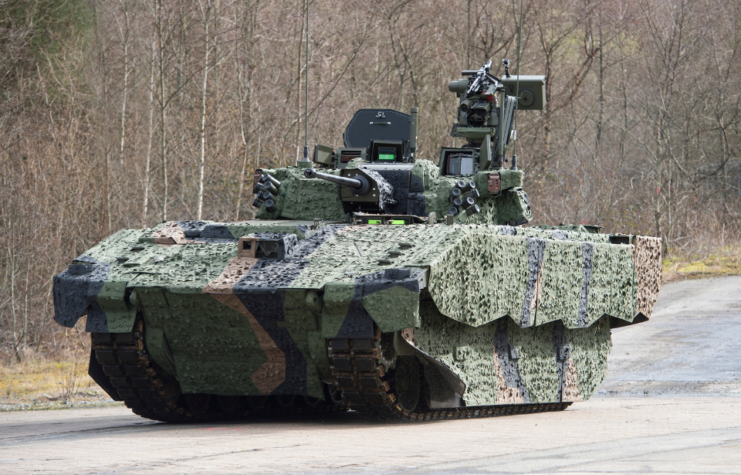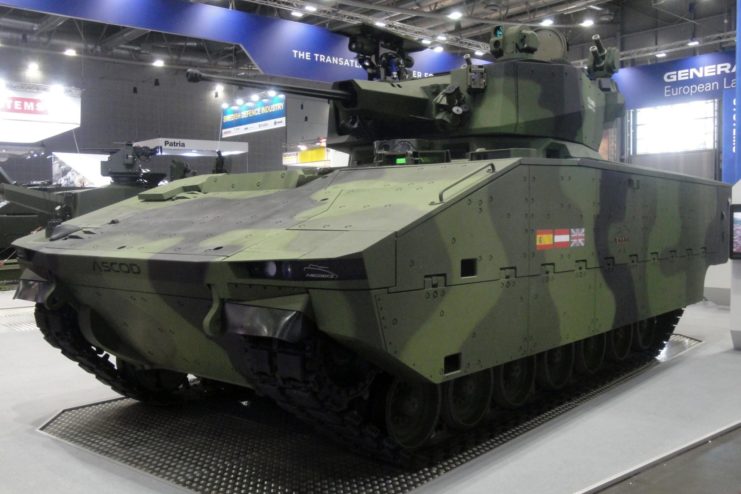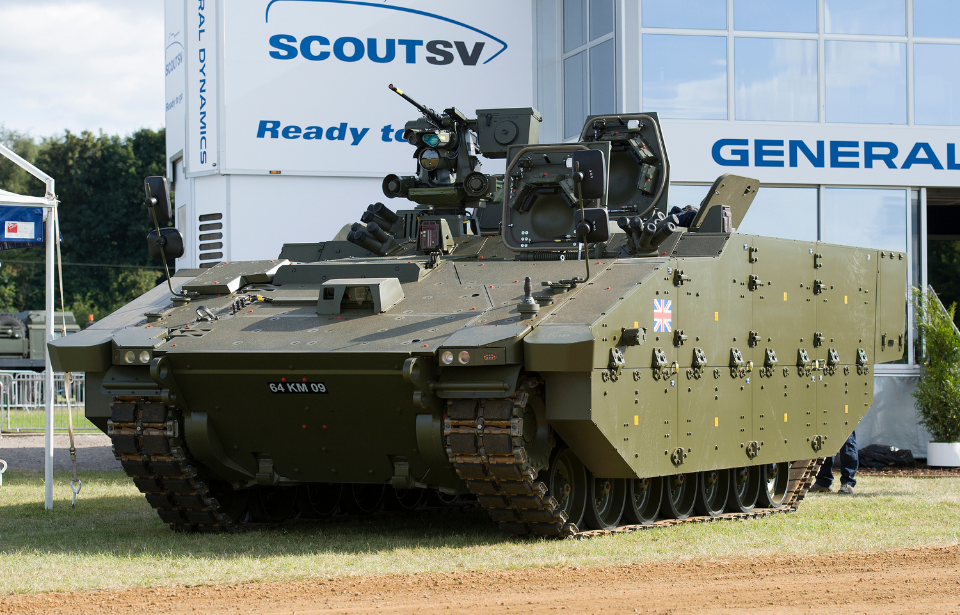The British Defence secretary Ben Wallace has promised to fix the huge list of worrying problems that are plaguing the development of the Ajax armored fighting vehicle. Currently, the vehicle has severe problems with sound and vibrations that have actually harmed crews during testing. Recently, the British military halted trials of the Ajax until these issues could be fixed, as we reported in June.
Wallace said that he has a scheduled meeting with Phebe Novakovic, CEO of General Dynamics, the manufacturer of the Ajax armored fighting vehicle (AFV). In this meeting, Wallace will discuss the tremendous issues and setbacks experienced by the vehicle’s development.

“We’ve paid for a piece of equipment, we expect it to be delivered,” Ben Wallace told the press at a conference in Washington. “Just like any other consumer, we have those rights, and if it’s not up to scratch, we’ll take action.”
The Ajax’s prolonged development began in 2010 when the U.K. Defence Ministry presented General Dynamics with a $6.4 billion contract which would eventually produce 589 vehicles in a few different variants that are specialized for certain tasks. Eleven years later and the British Army has only received 25 Ajax AFVs for trials. General Dynamics said they have another 91 complete vehicles waiting to be delivered.
The Defence Ministry has been patient with the development of the vehicle, but now patience is wearing thin.
“We’ve already withheld significant amounts of money from progressing of the contract until we fix it,” Wallace said. “It has to be fixed.”
The Ajax’s problems
However, fixing the issues present on the Ajax will certainly be easier said than done, as it is still plagued with problems that affect both its crew and operational capabilities. For example, the Ajax cannot fire on the move at present, due to issues with the suspension. Brutal amounts of vibration and noise caused crews to leave the vehicles with joint pain and nausea.

This caused trials in the vehicle to be halted in November of 2020. They resumed early this year, but changes were made to ensure the crew’s safety, including imposing a 20 mph speed limit to reduce vibrations and to not operate the vehicle for longer than a specified period of time to prevent hearing damage.
General Dynamics is dedicated to fixing the issues. The company recently prepared testimony for a Parliament Defence Committee hearing that is due to take place soon. In the testimony, the company said: “While we work diligently to address concerns referenced in the question, we are confident we will be able to implement any appropriate actions.”
In the testimony, General Dynamics answered a question on whether the development should continue, or be canceled. They said the Ajax “has completed over 60,000km of design proving trials and fired over 4,400 rounds of the CT40 cannon.” They added that they are “confident in its Ajax design, and continues to complete the full certification process to evidence its capabilities.”
The company has said that the recent reports of the vehicles’ extreme shortcomings are untrue and that “these accounts are without foundation in fact, and the actual performance data refute them.”
Wallace has previously served in the British Army and understands that issues with new vehicles are common, but not to this extent. He said new systems often “have teething problems,” however “this is more than a teething problem.”
“It’s a troubled program, no one’s hiding that,” he said. “We’ve got to get to the bottom of the problems with it.”
The Ajax
The Ajax is a modernized and redesigned descendant of the ASCOD AFVs that were developed in the 1990s. It was ordered by the British to replace their Combat Vehicle Reconnaissance (Tracked) (CVR(T)) family of vehicles that date back to the 1960s, although the Ajax is much larger. The Ajax will come in a number of variants that are specifically geared for particular tasks.

On paper, the Ajax is a cutting-edge vehicle that is one of the most advanced in its class. In 2019, Wallace said the family of vehicles would “provide the British Army with improved flexibility, maneuverability, and battle-winning capability and advantage. Its advanced reconnaissance systems will allow British soldiers to see things first, weigh up their options, and take decisive action before their adversaries.”
More from us: Messerschmitt Built Tiny, Ridiculous Cars When Planes Weren’t An Option
But constant problems and delays mean many regard the Ajax as a failure before it has even entered service. Time will tell if General Dynamics can fix the issues with the Ajax, or if the British will go elsewhere for a new AFV.
